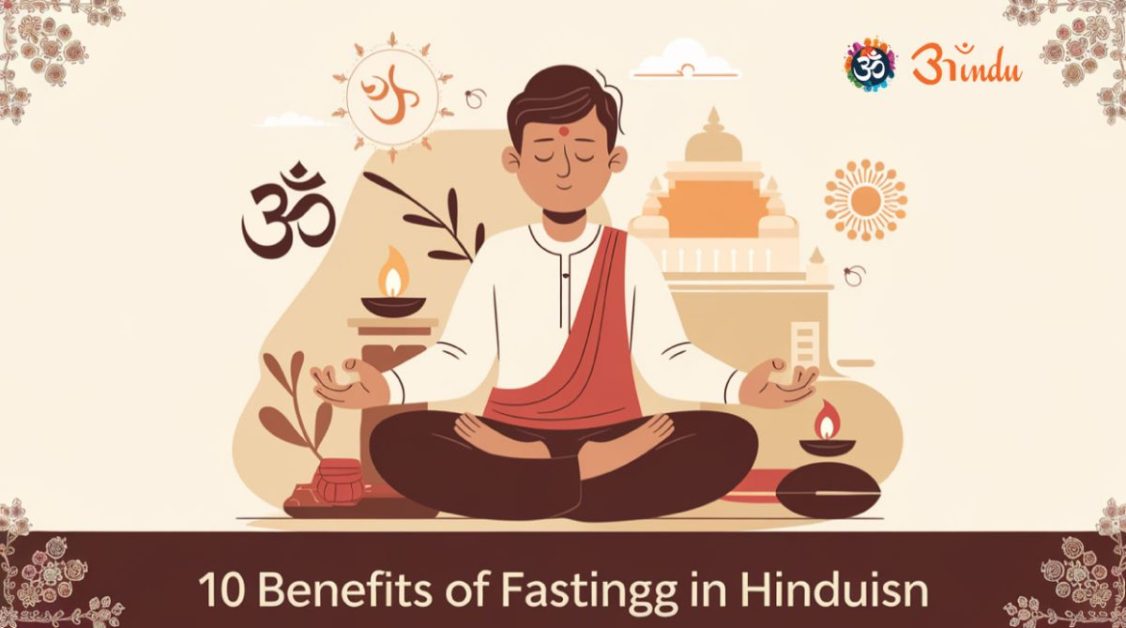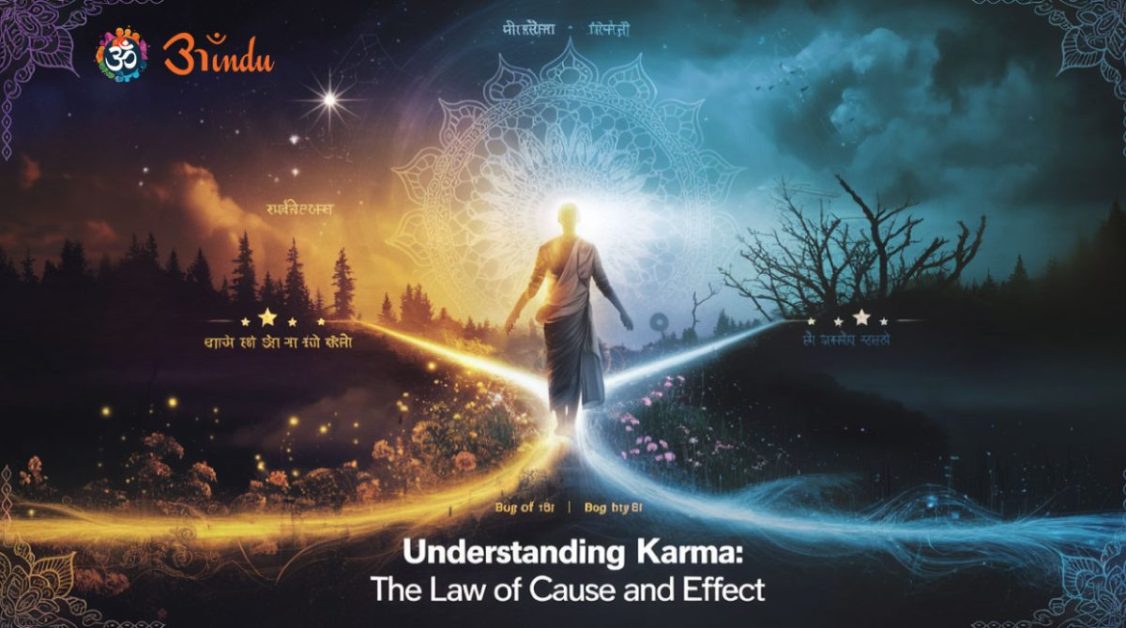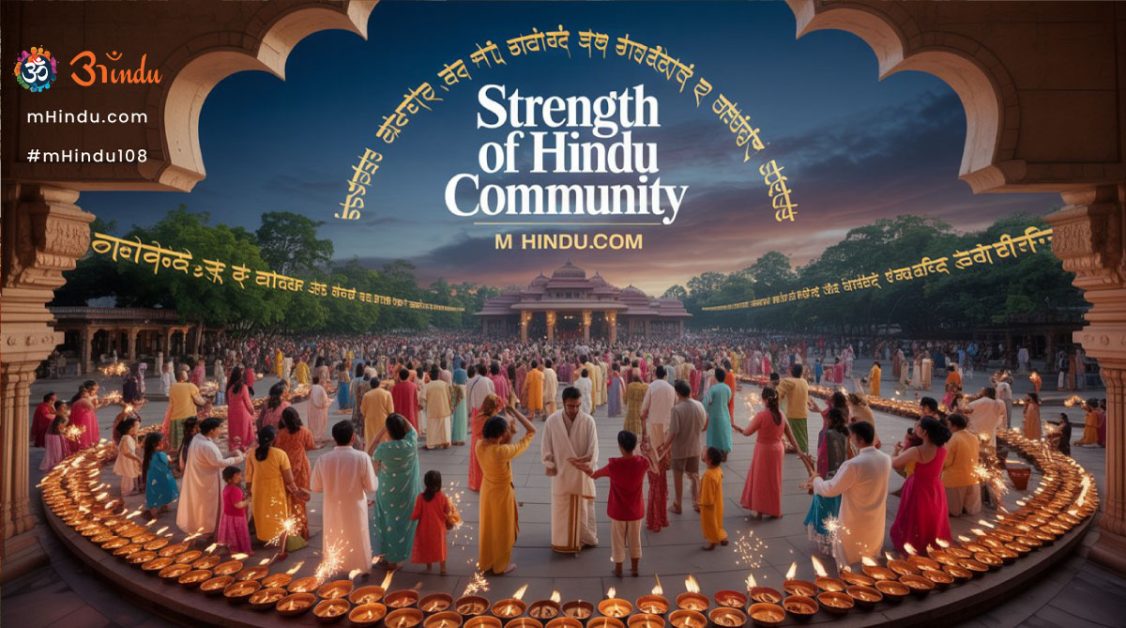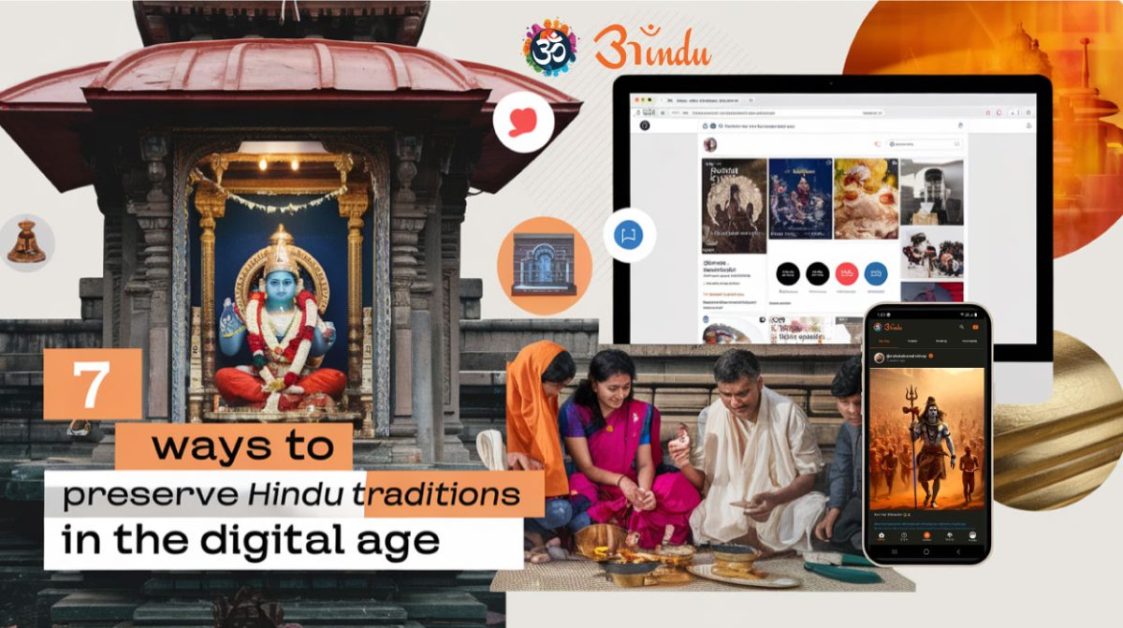Introduction: A River of Devotion in Motion
Imagine thousands of saffron-clad devotees, barefoot and singing “Bol Bam,” walking for days under the scorching sun — not out of compulsion, but with smiles of surrender. This is Kanwar Yatra, the largest annual spiritual pilgrimage in India that flows across regions like a living river of faith. Taking place during the Shravan month, this journey is a soul-offering to Bhagwan Shiva, whose calm cosmic presence welcomes Gangajal brought by His most loyal devotees.
Explore Blog Content
ToggleAt its core, Kanwar Yatra is more than just a journey — it is penance, prayer, and public expression of love toward Mahadev. Across the sacred ghats of Haridwar, Sultanganj, Gaumukh, Prayagraj, and Varanasi, lakhs of Kanwariyas collect holy Gangajal and carry it over hundreds of kilometers — to perform Jalabhishek at Shiva temples.
The word “Kanwar” refers to the bamboo pole slung over the shoulders of the devotee, with water pots balanced on either side — symbolic of balancing one’s karma and dharma on the road of life. In today’s fragmented world, this tradition revives what Sanatan Dharma always upheld — unity through shared devotion.
Why is the Kanwar Yatra held during Shravan month?
Shravan, the fifth month of the Hindu calendar, is believed to be when Samudra Manthan occurred. According to scriptures, Bhagwan Shiva drank Halahal poison during this churning to save the universe. To cool the effects of the poison, devotees offer Gangajal to Him during Shravan. Thus, Kanwar Yatra in this sacred month is a gesture of gratitude and surrender.
Is Kanwar Yatra only for men or can women participate too?
Though historically dominated by men, in recent years, thousands of women Kanwariyas have joined this Yatra. Sanatan Dharma recognizes Bhakti beyond gender. In fact, the sight of young women in saffron carrying Kanwars reflects the evolving yet deeply rooted spiritual inclusivity of Hindu culture.
“श्रद्धया देयम्, अश्रद्धया अदेयम्।”
(Taittiriya Upanishad 1.11)
Give with faith, not without — this is the essence of Kanwar Yatra. Every step is an offering, every chant a surrender.
The Mythological Origin and Meaning of Kanwar Yatra
Long before mobile phones captured moments, the Kanwar Yatra was imprinted in the memory of Sanatan Dharma through oral tradition, scriptures, and deep personal experiences. This Yatra finds its roots in the Puranic era, primarily in the legend of Ravana, the great devotee of Lord Shiva.
According to the Shiva Purana, Ravana, to gain favor from Mahadev, fetched Gangajal from Haridwar and carried it all the way to Kailash. This act of Bhakti, despite his asuric lineage, established the eternal principle — that Shiva is pleased not by wealth, but by heartfelt devotion. Today’s Kanwariyas walk in Ravana’s spiritual footsteps, not in ego, but in surrender.
In another legend, Parvati Mata once questioned Shiva on why He allows so much suffering on Earth. To answer, Shiva pointed at a Kanwariya walking miles barefoot — and said, “When one walks in Bhakti, karma burns like dried leaves in fire.” Hence, Kanwar Yatra became a living metaphor for burning away sins through devotion.
In Shakta traditions, the Kanwar symbolizes Yin-Yang — the divine feminine and masculine, balancing left and right sides. Every balanced Kanwar walk reflects cosmic order.
Is Kanwar Yatra mentioned in Hindu scriptures?
Yes, references to the offering of Gangajal to Mahadev appear in texts like Shiva Purana, Skanda Purana, and local folklore. The term “Kanwar” may not be always literal, but the concept of tapasya + water offering during Shravan is deeply rooted in these traditions.
Why do Kanwariyas walk barefoot?
Walking barefoot is an act of Tapasya (austerity) in Hinduism. Each step is a symbolic release of past karmas. The idea is to experience pain in humility, not as punishment, but as purification — the same principle seen in Vratas, Yatras, and Sanyasa traditions.
“यत्र यत्र रमणीयं तीर्थं गङ्गायाः तत्र जलं शम्भवे प्रियं।”
(Skanda Purana)
Wherever the Ganga flows, her waters are beloved to Shiva — and carrying them to Him is the highest act of Bhakti.
The Routes and Sacred Geography of Kanwar Yatra
Every pilgrimage becomes sacred not just because of the deity at its destination, but because of the journey itself. The Kanwar Yatra stretches across the northern belt of India like a web of devotion, linking rivers, temples, and ancient towns. These routes, walked for generations, are not randomly chosen — each step connects to the geography of Shiva worship and the cultural memory of Sanatan Dharma.
The most prominent route is from Haridwar to Neelkanth Mahadev Temple, where lakhs of devotees collect Gangajal from the Ganga and walk toward Rishikesh. Another popular route begins at Sultanganj (Bihar) and ends at Baidyanath Dham in Deoghar (Jharkhand) — a 108 km walk over 3–5 days, filled with chants of “Om Namah Shivaya.”
Then there’s Gaumukh, the origin of the Ganges at the glacier above Gangotri. The Kanwariyas who take this path are called Dandi Kanwariyas — they lie down after every step in Dandvat Pranam, covering hundreds of kilometers with their body, not just feet. Their route is not just devotional, it is penitential.
Some pilgrims also walk from Varanasi, Prayagraj, or even Delhi, covering hundreds of kilometers. The journey is often undertaken in groups, where brotherhood replaces caste, service replaces status, and faith replaces fatigue.
What are the major Kanwar Yatra routes in India?
The major routes include:
- Haridwar to Neelkanth Mahadev (Uttarakhand)
- Sultanganj to Baidyanath Dham (Jharkhand)
- Prayagraj to Kashi Vishwanath
- Gaumukh to Kedarnath (via Gangotri)
- Delhi to various temples in Haryana/UP
Each route is culturally significant, linking regions that hold Shaivite importance.
Do all Kanwariyas walk the same distance?
No. Distances vary based on starting point. While some cover 30–50 km, others walk up to 300+ km over 10–15 days. The longest and most challenging are Dandi Yatras, where the devotee lies flat on the ground after each step — symbolizing total ego surrender.
“गङ्गा च यमुना चैव गोदावरी सरस्वती।
नर्मदा सिन्धु कावेरी जलस्मरणं भवेत् पवित्रम्॥”
(Ganga Stotram)
Merely remembering sacred rivers purifies. Carrying their water to Shiva is the embodiment of that purification.
Rituals, Rules, and the Sacred Discipline of the Yatra
Kanwar Yatra isn’t a random march. It follows a strict spiritual code rooted in Sanatan discipline. Devotees are expected to abstain from meat, alcohol, anger, lust, and ego during the Yatra. Most wear saffron clothes, often go barefoot, and chant Mahadev’s name through the day and night.
The most important ritual is the collection of Gangajal — done with reverence from designated ghats like Har Ki Pauri, Ajgaivinath, or Triveni Sangam. This water must be carried without touching the ground, which is why Kanwars are never rested on earth — special hooks, poles, or Kanwar stands are used.
Another sacred aspect is Bhole Baba’s family culture: devotees refer to each other as “Bhole,” “Kanhaiya,” or “Bam.” There’s no caste, no surname — just spiritual brotherhood. Many Kanwariyas also take a vow of silence or Maun Vrata during the walk.
Every Dham or local Shiva temple becomes a site of celebration when the Kanwariyas arrive. Priests assist in the Jalabhishek, where Gangajal is offered on the Shivling, accompanied by Rudrabhishek chants, bells, and the rolling echo of “Har Har Mahadev.”
What rules do Kanwariyas follow during the Yatra?
Kanwariyas follow strict Vrata rules: vegetarian food, no intoxication, no anger, celibacy, and humility. Their Kanwars must not touch the ground. Many also sleep in standing positions using support ropes or hanging beds.
What is the significance of offering Gangajal to Shiva?
According to scriptures, Ganga emerged from Shiva’s matted locks. Offering Gangajal is symbolic of returning what He gave, while cooling the inner fire of karma. It’s also a gesture of cleansing oneself before seeking blessings.
“नमः शिवाय च शिवतराय च।”
(Yajurveda 16.41)
Salutations to the ever-auspicious — this mantra forms the soul of every Kanwar chant and ritual.
The Bhakti Culture on the Move – Music, Brotherhood, and Service
The Kanwar Yatra is not only a pilgrimage — it is a mobile celebration of bhakti. With every step, the air resonates with “Bam Bam Bhole”, bhajans, and DJ trucks playing Shiva songs that energize tired feet. For many, the yatra is a spiritual mela — a moving temple where every soul is a priest and every chant a puja.
Groups often walk in synchrony, with matching outfits, personalized flags, and team names like “Mahadev Squad,” “Ganga Putra,” or “Nandi Bhakts.” Music speakers mounted on trolleys or autos accompany them, blasting bhajans like “Jai Shankar,” “Kanhaiya Bam Lahari,” or “Mere Bhole Baba.”
But it’s not just about celebration — seva (service) is at the heart of the yatra. Entire families set up Langars (free food stalls), water booths, and first-aid camps for Kanwariyas. Children hand out glucose water, elders wash the tired feet of pilgrims, and volunteers offer shelter during heavy rains. These acts of selfless service turn the highway into a corridor of compassion.
Brotherhood among strangers is another divine feature. A tired Kanwariya is instantly offered a lift on a Kanwar trolley. Someone with a shoe bite is given chappals without a second thought. It’s a collective energy of Sanatan unity, compassion, and equality — reflecting Shiva’s nature as the Adi Guru and friend of all beings.
Why is music so prominent in Kanwar Yatra?
Music during the Kanwar Yatra is not entertainment — it’s a tool of spiritual stamina. Devotional songs fuel the mind and body. Bhajans become a way to chant Shiva’s name constantly, keeping focus and energy alive during long walks.
How do locals support Kanwariyas on the journey?
Locals organize free food stalls, rest camps, and emergency services along highways and towns. It’s common to see families distributing water, medicines, or just smiles to encourage the walkers. This is seen as seva to Shiva himself, as every Kanwariya is considered divine.
“शिवाय नमस्तुभ्यं शान्ताय च नमः शिवम्।
सर्वात्मने नमस्तुभ्यं ईश्वराय नमो नमः॥”
(Shiva Mahimna Stotra)
Salutations to Shiva, who is peace, who is the soul of all. This deepens the idea that serving others is serving Shiva himself.
Safety, Faith, and the Evolving Landscape of Kanwar Yatra
In recent years, the Kanwar Yatra has grown into one of the largest religious gatherings in the world. With this growth comes new challenges — and new adaptations. Safety, discipline, and interfaith harmony are becoming important aspects of the evolving yatra ecosystem.
Authorities now designate special Kanwar lanes on highways, install street lights, and deploy traffic police to manage crowds. There are mobile health vans, drone surveillance, and Kanwar check posts to ensure no accident or misbehavior occurs.
There’s also a spiritual concern: some Kanwariyas misuse the Yatra’s freedom, disrupting traffic, or playing loud music in residential zones. But this is discouraged by senior devotees and even local authorities. True bhakti is peaceful, not disruptive.
Technology has also entered the yatra. Live GPS tracking, mobile apps for route information, weather alerts, and even virtual Jalabhishek for those unable to travel have been introduced. This evolution shows how Sanatan Dharma adapts while preserving its soul.
Interestingly, many non-Hindu volunteers have also stepped in to serve — showing how the bhakti of Shiva transcends religious identity and embodies a universal oneness.
What safety measures are in place during the Kanwar Yatra?
Authorities deploy thousands of police, medical units, and CCTV cameras. Dedicated lanes, crowd management strategies, and emergency camps are set up. NGOs also provide round-the-clock assistance to ensure safety.
Has technology changed the traditional Yatra?
Yes, but for the better. Apps now offer route updates, devotional music, and weather alerts. Drones monitor crowd flow, while virtual darshan options allow even the elderly to participate. The core of bhakti remains unchanged.
“कालः कलयतां श्रेष्ठो न कालस्यास्ति कश्चन।
कालं नमाम्यहं देवं कालकालं नमाम्यहम्॥”
(Mahabharata – Shiva praising time)
Time changes everything — and yet Shiva, the Lord of Time, remains constant. So too, Kanwar Yatra evolves while remaining sacred.
Summary: The Living Stream of Devotion Called Kanwar Yatra
The Kanwar Yatra is more than a journey — it is a living, breathing expression of Hindu devotion that flows like the Ganga herself. Each year, it reawakens faith, unity, discipline, and service across thousands of kilometers of Indian land. Whether it’s a barefoot Kanwariya carrying Gangajal with tears in his eyes, or a child offering cold water to a stranger, the entire landscape becomes sacred ground.
This Yatra cuts across caste, language, region, and even religion. In the face of physical pain, Kanwariyas chant “Har Har Mahadev” with joy, seeing every hardship as tapasya for Bhagwan Shiva. In their simple, saffron-clad sincerity lies a powerful counter-narrative to modern distractions — here is a generation that willingly unplugs from the digital world to walk in silence, chant, serve, and surrender.
As Shiva watches from Kailasa, this mass of devotees — with their kanwars, songs, and dust-covered feet — remind us that Sanatan Dharma is alive, youthful, and timeless. The Kanwar Yatra is not just a festival. It is a collective meditation in motion, a river of souls flowing toward divine love.
If you stand by the roadside and join your palms in namaskar as a group of Kanwariyas passes, you’ll see their eyes — humble, determined, glowing. You’re not just seeing pilgrims. You’re witnessing the heartbeat of Bharat.
FAQs – People Also Ask
1. What is the spiritual purpose of the Kanwar Yatra?
The Kanwar Yatra is a form of penance and devotion where devotees carry Gangajal to offer to Lord Shiva, seeking blessings, purification of sins, and spiritual discipline.
2. Who can participate in the Kanwar Yatra?
Anyone — regardless of age, gender, or background — can join the Yatra. The only requirement is faith and respect for the journey’s spiritual essence.
3. Is the Kanwar Yatra mentioned in Hindu scriptures?
While not named explicitly, the idea of offering Gangajal to Lord Shiva is rooted in Puranic stories, especially in the context of Sawan month and the Samudra Manthan episode.
4. What is the significance of Gangajal in Kanwar Yatra?
Gangajal is considered pure and sacred, capable of cleansing sins. Offering it to Shiva during Shravan is seen as a powerful act of devotion.
5. How long does the Kanwar Yatra last?
It varies, but traditionally it spans the entire Shravan month, with the peak intensity seen in the last two weeks leading up to Shravan Shivratri.
6. What is the origin of the Kanwar Yatra?
The Yatra is inspired by legends of Ravana offering Gangajal to Shiva, and ancient traditions of walking to fetch sacred water for rituals.
7. Why do Kanwariyas wear saffron clothes?
Saffron symbolizes sacrifice, purity, and renunciation. It is a visual representation of their spiritual focus and temporary ascetic lifestyle during the Yatra.
8. Are women allowed in the Kanwar Yatra?
Yes, although men dominate the numbers, many women also participate, especially in urban regions. The yatra is open to all who approach it with reverence.






